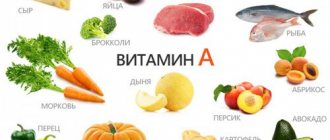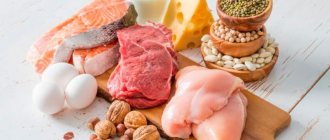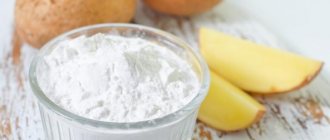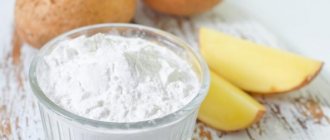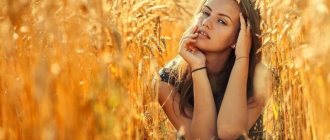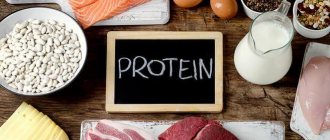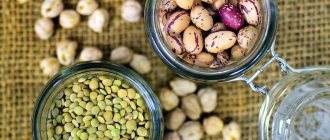Excess weight is not always associated with a predominantly sedentary lifestyle and banal overeating. There are many girls who go to the gym and stick to a diet, but cannot lose weight. The reason for this is often a deficiency of iron, a microelement that has a direct effect on metabolism and thyroid function. If such a problem occurs, the efforts made not only do not produce any results, but, on the contrary, lead to an even greater gain of extra pounds.
Iron is an essential trace element responsible for many important functions for the human body. Its excess and deficiency negatively affect health and well-being. Both conditions are deviations from the norm, but most often people suffer from a deficiency of this microelement.
The role of iron in the human body
The microelement in question is a substance that is responsible for the level of hemoglobin. Iron is an integral part of a huge number of enzymes and performs a large number of important functions:
- transportation of oxygen to tissues, cells, organs;
- hematopoiesis;
- DNA production;
- formation of nerve fibers and growth of the human body;
- maintaining the vital activity of each individual cell;
- ensuring energy metabolism;
- participation in redox reactions.
In addition, the microelement is responsible for the body’s protective functions and other equally important processes. Iron is of particular importance for a woman during pregnancy, since this time is characterized by the maximum need for the substance. Its deficiency leads to very serious adverse consequences.
Quinoa
Quinoa is classified as a pseudocereal. A 185-gram serving of cooked quinoa seeds contains 2.8 mg of iron, which is 16% of the recommended daily value.
Additionally, quinoa seeds are gluten-free, making them a good choice for people with celiac disease or other forms of gluten intolerance.
Quinoa also contains more protein than many grains and is rich in magnesium, copper, manganese and many other nutrients.
In addition, quinoa has greater antioxidant activity than many other grains.
The body's daily requirement for iron
The normal content of the microelement in the body is from three to four milligrams. The main part of the substance (approximately 2/3) is concentrated in the blood. The remaining concentration of iron is concentrated in the bones, liver, and spleen. A decrease in the level of a microelement occurs for natural reasons - menstrual cycles, sweating, exfoliation of the dermis. If there are no foods rich in iron in the diet, this inevitably leads to a deficiency of the substance, since the spent reserves are simply not replenished. To maintain a microelement at the required level, about 10-30 milligrams of this compound should come from the daily diet.
The exact amount depends on age, gender and other related factors:
- children under 13 years of age - from 7 to 10 mg;
- male adolescents require 10 and female adolescents - 18 mg;
- men - 8 mg;
- women - from 18 to 20, and during pregnancy - at least 60 mg.
Failure to comply with the daily intake of iron leads to disruption of many functions, which even affects appearance. The poor condition of the skin and hair is not always associated with age or incorrectly selected cosmetics. And, when thinking about buying another jar of expensive cream, you should take a closer look at your own diet, since the problem may lie precisely in the lack of iron. This situation is especially relevant for those who often go on diets, wanting to lose weight, limit themselves to eating only some food, paying attention to calorie content, and not to the usefulness of the composition.
Superfood with iron. 3 products for “iron” health
What vegetables increase hemoglobin?
Beetroot helps to cope most effectively with iron deficiency; it is useful in raw or boiled form. This product ensures the regeneration of iron content, “starts up” red blood cells, and enriches the blood with oxygen. Other vegetables will help increase hemoglobin.
- Carrot. The product is consumed fresh, can be added to salads, and can be boiled.
- Tomato. The vegetable improves blood composition, saturates it with essential elements, and prevents the formation of blood clots. Tomatoes do not lose valuable qualities after heat treatment.
- Potato. The vegetable is saturated not only with iron, but also with other useful elements - calcium, phosphorus, potassium, magnesium, vitamins and organic acids. It is included in the menu boiled.
- Zucchini. The product is rich in iron, potassium and magnesium. The vitamin C content helps in the absorption of iron.
All of these vegetables strengthen the body, restore the functioning of the intestines, which makes the fight against low hemoglobin more effective.
List of foods high in iron
The microelement is present in various foods, so it can be heme and non-heme. The latter is found in products of plant origin, and the former - of animal origin. The difference between them also concerns the degree of digestibility. Iron from animal products is absorbed by 15-35%, and from plant products by 2-20%. Therefore, the heme microelement should predominate in the diet and be present in sufficient quantities.
Vegetarians have a more difficult time than those who consume meat products daily. The situation can be corrected by eating food that improves the absorption of iron. These foods include those rich in vitamin C.
The greatest amount of iron is found in:
- Meat and offal. These are turkey, chicken, beef, lean pork, lamb and liver. Dark meat contains the most iron.
- Seafood and fish. To compensate for the microelement deficiency, you need to give preference to eating shrimp, tuna, sardines, oysters, clams, mussels, as well as black and red caviar.
- Eggs. This applies to chicken, ostrich, and quail. Along with iron, they contain unsaturated fatty acids, vitamins, and magnesium.
- Bread and cereals. Especially useful are cereals such as oatmeal, buckwheat and barley. Wheat bran and rye contain a lot of iron.
- Legumes, vegetables, herbs. The largest amount of microelement is found in peas, beans, beans, spinach, lentils, cauliflower and broccoli, beets, asparagus, and corn.
- Berries and fruits. In this category of products, the champions in iron content are dogwood, persimmon, dogwood, plum, apples and grants.
- Seeds and nuts. All types of nuts contain many microelements responsible for hemoglobin levels. Seeds are not inferior to them.
- Dried fruits. A large amount of iron is contained in figs, prunes, raisins, and dried apricots.
On a note! Not all dried fruits are healthy. Often, along with iron, which is valuable for the body, they contain harmful substances. The appearance of fruits that are too beautiful and clean usually indicates that they have been subjected to processing, which allows unscrupulous manufacturers to increase the shelf life of the product.
Subtleties of increasing hemoglobin
Iron-rich foods are the best way to combat low hemoglobin.
Pomegranate fruits, which have “deposits” of iron, effectively help increase the level of this iron-containing complex protein. The juice made from them is also useful.
Red grape wine is an effective assistant in increasing hemoglobin. However, this drink is prohibited for expectant mothers.
Even a diet menu based on the use of iron-containing dishes does not guarantee success. The production of hemoglobin that occurs in the body depends not only on this substance. You also need to take care of your copper intake.
Pear is a fruit that speeds up the process of restoring healthy levels of iron-containing protein. It is often recommended by doctors for patients suffering from anemia, especially if iron supplements do not produce results.
Honey not only improves the situation with hemoglobin, but also has a restorative effect on the body. It is recommended to eat about 50-70 g of healthy sweets every day.
The absorption of iron will become better if you include foods rich in vitamin C. The best effect is provided by freshly squeezed fruit drinks and citrus fruits. Buckwheat contains folic acid, which activates the process of hematopoiesis. Bananas are recognized as a supplier of vitamin B6, without which hemoglobin cannot be normalized.
There are also a number of long-acting drugs:
- heferol;
- ferrogrademet;
- ferrograd;
- irovit;
- sorbifer durules;
- fefol;
- Tardiferon-retard.
Drugs that are effective for a short period of time are ferrous gluconate, ferrous fumarate, ferrous sulfate.
Traditional medicine offers its own methods of combating low hemoglobin.
The following recipes will be useful:
- Raisins, prunes, dried apricots and walnuts are taken in equal quantities and mixed thoroughly. The resulting mixture is processed using a meat grinder and supplemented with a small amount of honey. Every day you need to consume this sweet dish in the amount of 6 tablespoons.
- Freshly squeezed carrot juice is effective in increasing hemoglobin; 300-400 ml per day will benefit the body. Beetroot juice is mixed with honey in equal proportions, the mixture is consumed in the amount of 2 tablespoons three times a day.
- Red clover helps normalize the substance. 4 heads of the plant are dissolved in boiling water and infused for half an hour. Treatment lasts for a month, the mixture is consumed half a glass three times a day, preferably taken before meals.
- “Compote” made from fresh juices mixed in equal (100 g) parts effectively helps increase hemoglobin. Necessary juices: apple, carrot, beetroot, pomegranate. You should add 50 g of honey, consume 2 spoons three times a day.
- Blue blackberry (2 parts leaves), mixed with white clasp grass (2 parts), St. John's wort grass (3 parts). Take a tablespoon of the resulting composition and pour it with a glass of boiled water. Infuse the mixture for three hours, take a spoon three times a day for 30 days.
Table of foods containing iron
A more specific idea of how many milligrams of iron a particular product contains is provided by tabular data. If you analyze the information contained in them, it becomes clear that the highest concentration of microelement per 100 grams of product is found in chicken and pork liver, as well as shellfish. Bran, soy, and lentils are slightly inferior, but the amount of substance absorbed from them is two times lower.
Animal products
| The product's name | Iron content in mg per 100 g |
| pork liver | 20,2 |
| chicken liver | 17,5 |
| beef liver | 6,9 |
| beef heart | 4,8 |
| pork heart | 4,1 |
| beef meat | 3,6 |
| lamb meat | 3,1 |
| pork meat | 1,8 |
| chicken's meat | 1,6 |
| turkey meat | 1,4 |
| oysters | 9,2 |
| mussels | 6,7 |
| sardines | 2,9 |
| black caviar | 2,4 |
| chicken yolk | 6,7 |
| quail yolk | 3,2 |
| beef tongue | 4,1 |
| pork tongue | 3,2 |
| tuna (canned) | 1,4 |
| sardines (canned) | 2,9 |
Products of plant origin
| The product's name | Iron content in mg per 100 g |
| wheat bran | 11,1 |
| buckwheat | 6,7 |
| oatmeal | 3,9 |
| Rye bread | 3,9 |
| soybeans | 9,7 |
| lentils | 11,8 |
| spinach | 2,7 |
| corn | 2,7 |
| peas | 1,5 |
| beet | 1,7 |
| peanut | 4,6 |
| pistachios | 3,9 |
| almond | 3,7 |
| Walnut | 2,9 |
| dogwood | 4,1 |
| persimmon | 2,5 |
| dried apricots | 3,2 |
| dried prunes | 3 |
| pomegranate | 1 |
| apples | 0,1 |
The opinion that grants and apples contain the most iron is not true. Per 100 grams of these fruits there is no more than 1 and 2 milligrams of microelements.
12 vegetables rich in iron
What fruits increase hemoglobin?
Modern research has found that the first fruit in the fight against iron deficiency is the fresh peach. 4 mg are present in 100 g of fresh product, in dried - about 3 mg. The following fruits are also relevant.
- Quince. Adding 100 g to the menu provides 3 mg of iron.
- Persimmon. Eating 100 g of fruit “gives” the body 2.5 mg of iron.
- Pear. In addition to iron (2.3 mg), the fruit is rich in zinc, manganese, cobalt, copper, and is effective in treating anemia.
- Apple. For a long time it was considered the number one fruit in the list of fruits that increase the concentration of hemoglobin in the body. When fresh, 100 g of apples contain 2.2 mg. The indicators of dried fruits look better - approximately 2.7 times more.
- Pomegranate. By eating 100 g of the product, you can replenish iron reserves by 1 mg. It is also good for its abundance of valuable vitamins.
- Apricot. It is best consumed in dried form, the concentration of essential elements increases. The fresh product is also useful - 0.7 mg. In addition to iron, apricots contain cobalt, manganese, and copper. All these elements together are useful for anemia and activate hemoglobin biosynthesis.
- Kiwi (0.8 mg) and fresh plums (0.5 mg) will be beneficial for the body.
- Watermelon is famous for its high concentration of iron; its consumption can enrich the body with other valuable substances - potassium, vitamins. Not only is the hemoglobin level restored, but also energy increases, and the person gets rid of chronic weakness.
Iron absorption is a process that occurs in the proximal intestine. There are certain foods that contain phytates and phosphates that inhibit it. The solution to the problem will be to include in the menu fruits that activate the absorption of iron and are endowed with vitamin C. The most beneficial will be all citrus fruits, melon, pineapple, and sour apples.
What affects iron absorption
Enriching the diet with foods high in microelements does not always compensate for its deficiency in the body. There are foods that interfere with the absorption of the substance. This includes products with polyphenols, calcium and tannin. This fact should definitely be taken into account by those who suffer from iron deficiency.
Dairy products do not contain this microelement, are rich in calcium, and, therefore, lead to a decrease in the substance obtained from food. Strong tea and coffee are not the best allies of iron. Lovers of these drinks should get into the habit of postponing the enjoyment of a cup of invigorating coffee or tea until later after a meal. In general, it is better to replace Coca-Cola with dried fruit compotes or rosehip infusion.
Which nuts increase hemoglobin?
Of the nuts that are used in the fight against low hemoglobin, walnuts are the most useful. The product contains iron, potassium, magnesium, cobalt, and a large number of vitamins. This composition allows it to stimulate the process of synthesis of the necessary substance and have a strengthening effect on a weakened body.
Eating nuts in combination with raisins is beneficial for hemoglobin. Half a glass of raisins is soaked in water for 2 hours. Then the water is drained, the raisins are mixed with walnuts (20 g is enough). The dish is divided into three servings, the approximate volume of each serving is a couple of tablespoons.
You can also try a combination of nuts with cranberries and honey. All these elements are mixed using a blender.
How to determine iron deficiency in the body
The lack of this microelement makes itself felt by general weakness, high fatigue, and a sharp decrease in performance. The blush gives way to excessive pallor. The skin becomes rough and excessively dry. The hair starts to come out. Nails peel and break. Cracks form on the heels and corners of the mouth.
A condition in which there is a constant lack of iron is called anemia. It has a negative impact not only on appearance, but also on the body. Examinations often show that even the tissues of the gastrointestinal tract become pale. This indicates insufficient blood supply to this organ, and such a situation is not just a deviation from the norm, but also an indicator that the normal nutrition of the internal organs is disrupted.
Iron deficiency leads to the following problems:
- frequent dizziness;
- general fatigue and weakness;
- rapid heartbeat and shortness of breath even with light exertion;
- numbness of the limbs;
- sleep problems;
- frequent colds and vulnerability to infections;
- disruption of the gastrointestinal tract;
- suppression of appetite and difficulty swallowing food;
- desire to eat chalk or raw cereals, as well as “enjoy” the smell of paint and acetone.
In addition, as noted earlier, the condition of nails, skin and hair deteriorates. In other words, a person’s well-being and appearance leave much to be desired, which negatively affects all aspects. Of course, you can’t diagnose yourself. Only tests can determine that a person is suffering from anemia. Iron deficiency is indicated by a decreased hemoglobin level. In men it should not be lower than 130, and in women it should not be less than 120 grams per 1 liter of blood.
Which berries increase hemoglobin?
Berries will also help improve hemoglobin levels when levels are low. You should definitely eat cranberries and black currants; the products are healthy not only fresh, but also frozen. Cranberries can be mixed with sugar. Strawberries, strawberries and blueberries are also recommended for iron deficiency.
A berry that is useful for anemia and anemia is rowan. To achieve the effect, you must eat at least a tablespoon daily.
Fish
Certain types of fish, such as tuna, haddock, mackerel and sardines, are particularly rich in iron.
Thus, an 85-gram serving of canned tuna contains about 1.4 mg of iron, which is approximately 8% of the recommended daily value.
Fish also provides the body with omega-3 fatty acids, which have been shown to promote brain health, improve immune function, and support healthy growth and development.
Fish also contains several other important nutrients, including niacin (B3), selenium and vitamin B12.
Tofu
Tofu is a soy product popular among vegetarians.
A 126-gram serving provides 3.4 mg of iron, which is 19% of the recommended daily value.
Tofu is also a good source of thiamine (B1) and several minerals including calcium, magnesium and selenium. Additionally, it provides 22 grams of protein per serving.
Tofu contains unique compounds called isoflavones, which have been shown to improve insulin sensitivity, reduce the risk of heart disease, and relieve menopausal symptoms.
Broccoli
Broccoli is incredibly nutritious. A 3-ounce serving of cooked broccoli contains 1 mg of iron, which is 6% of the recommended daily value, plenty of vitamin B9, 5 grams of fiber and some vitamin K.
Broccoli is rich in vitamin C, which helps your body absorb iron better.
Dark chocolate
Dark chocolate is incredibly delicious and nutritious.
A 28-gram serving contains 3.4 mg of iron, which is 19% of the recommended daily value.
This small serving also covers 56% of your daily requirement for copper and 15% of magnesium.
Research has shown that chocolate has a beneficial effect on cholesterol levels and may reduce the risk of heart attacks and strokes.
To get the maximum benefits, it is best to consume dark chocolate that contains at least 70% cocoa.

